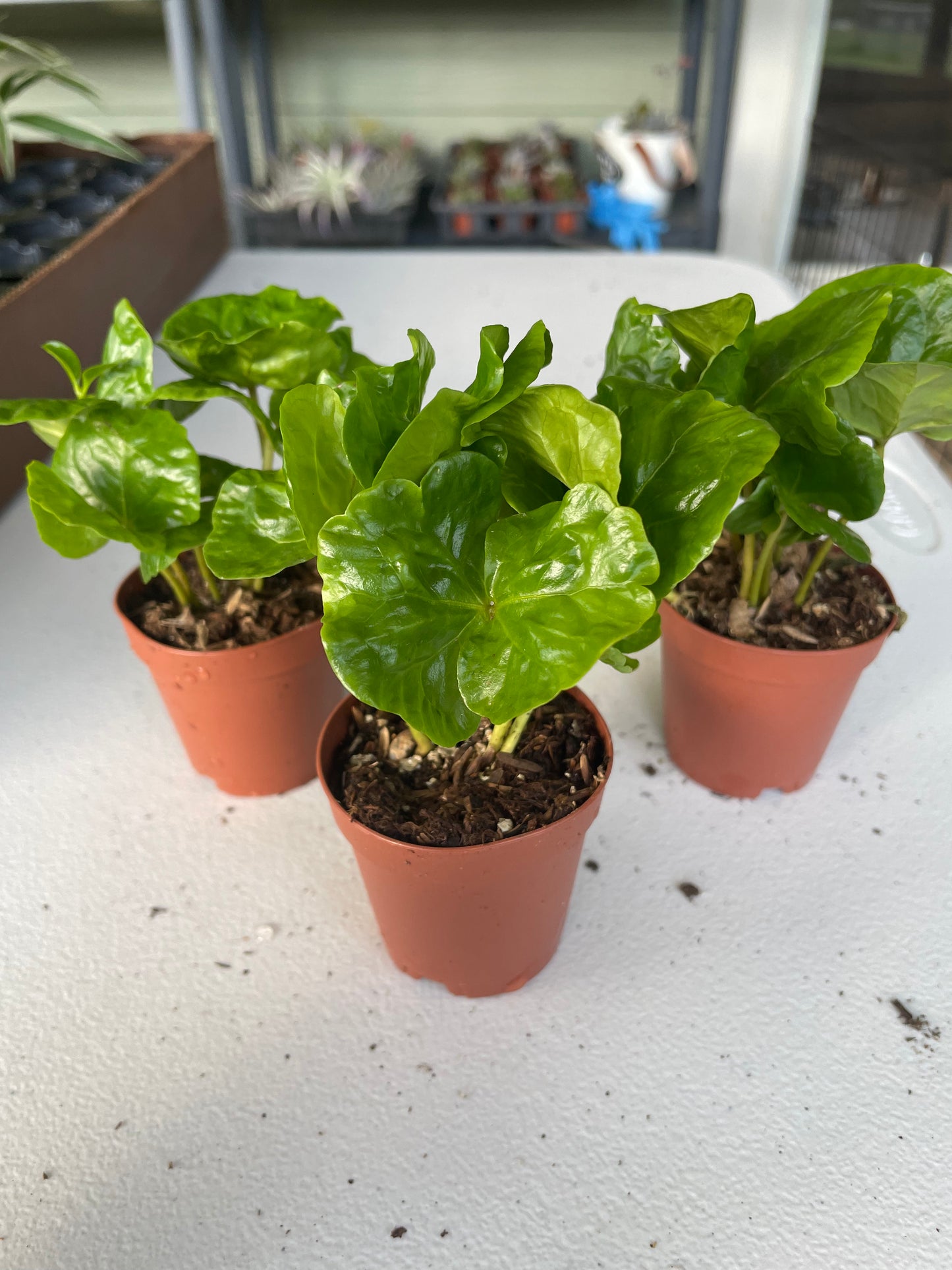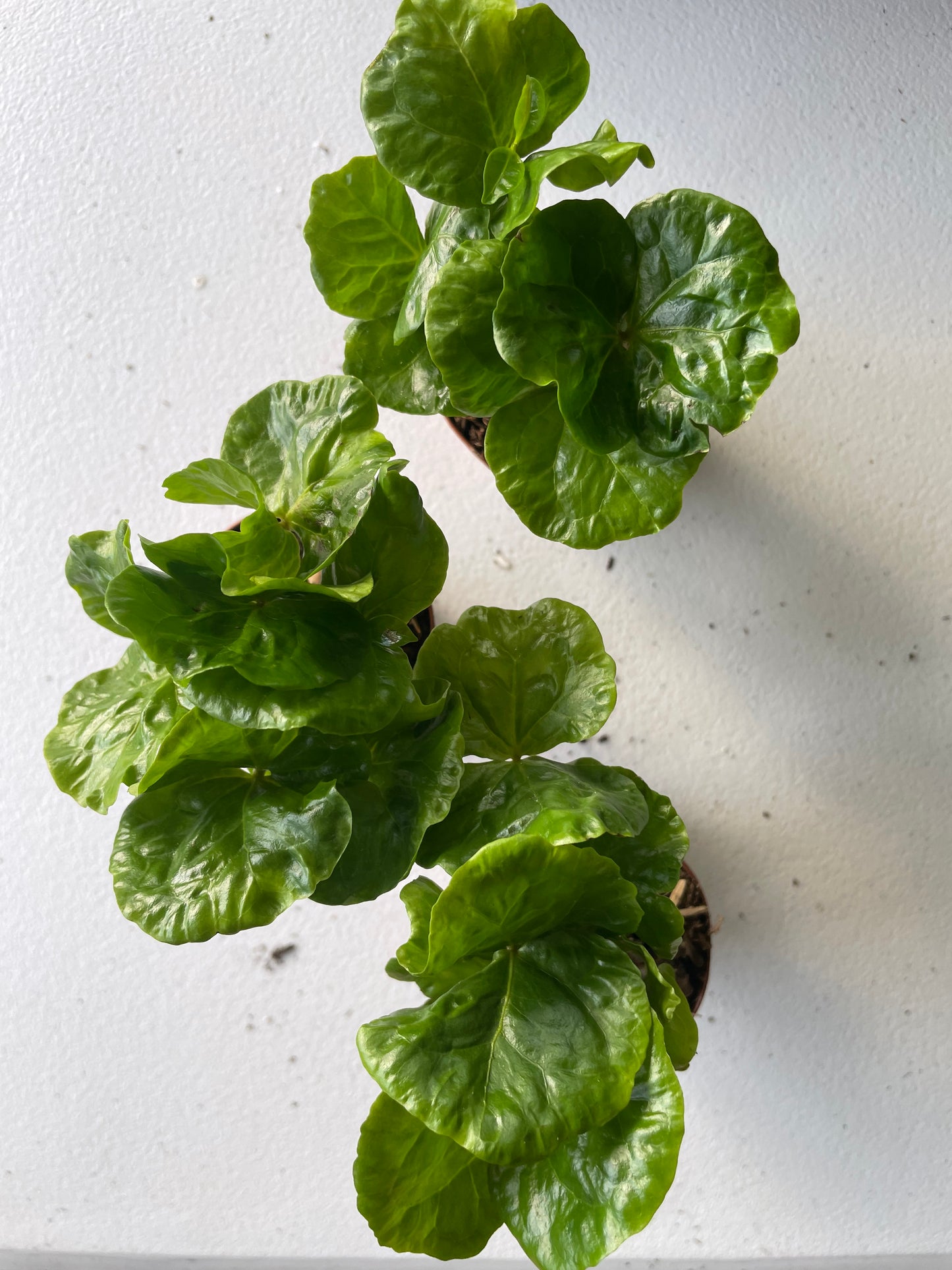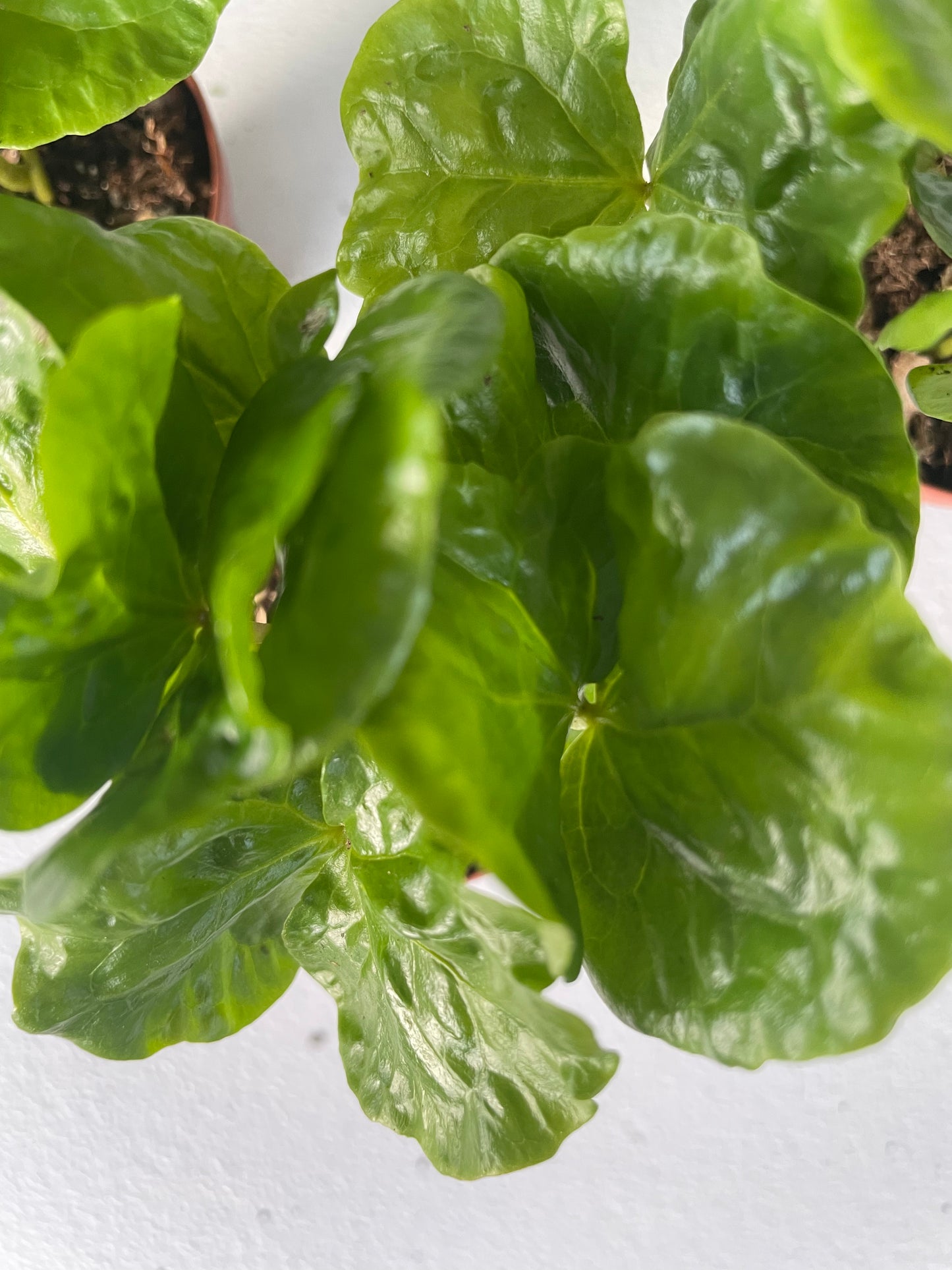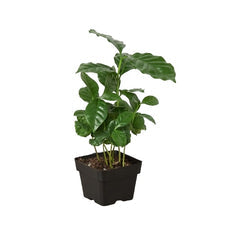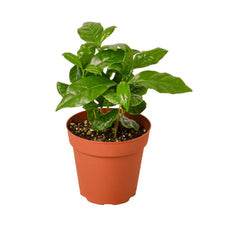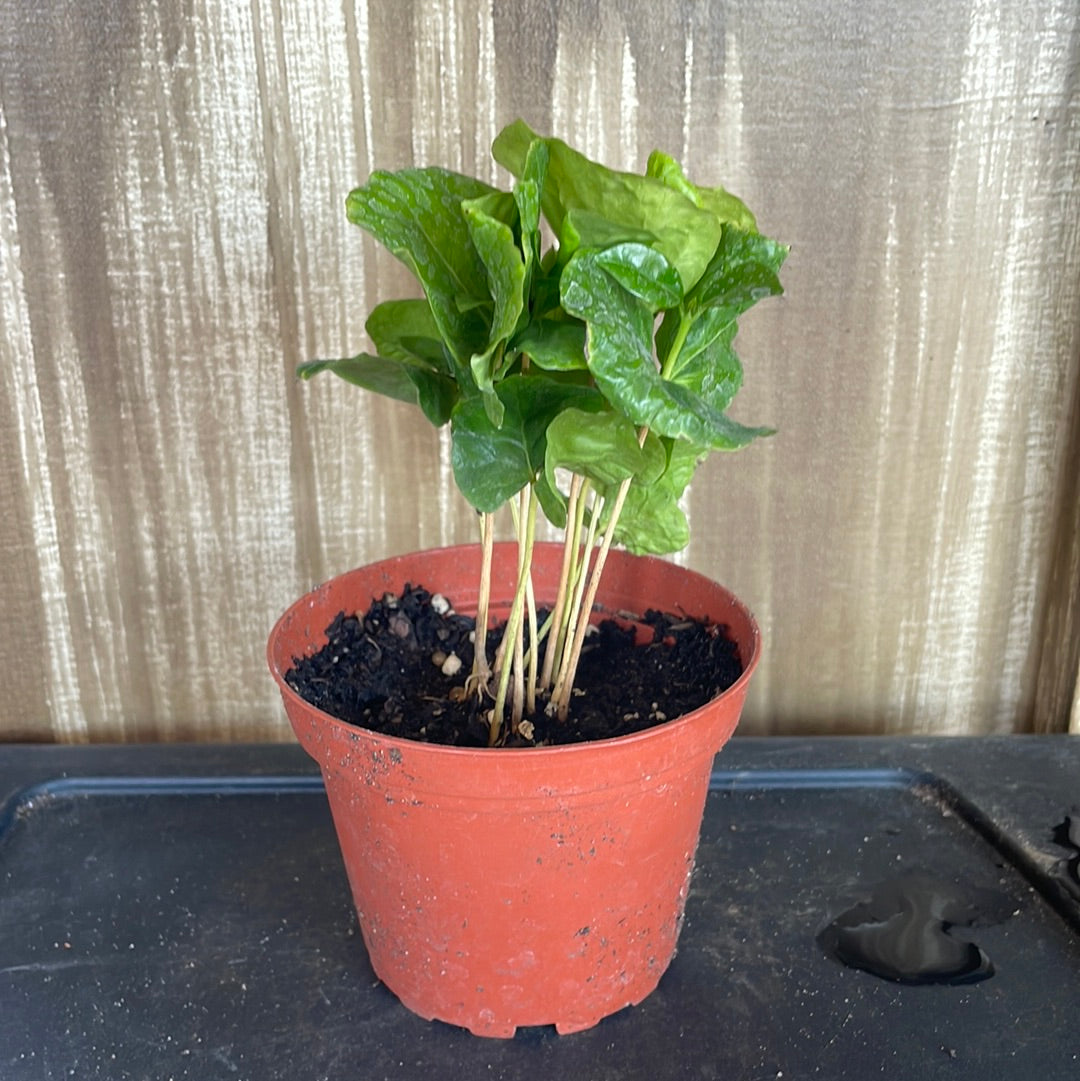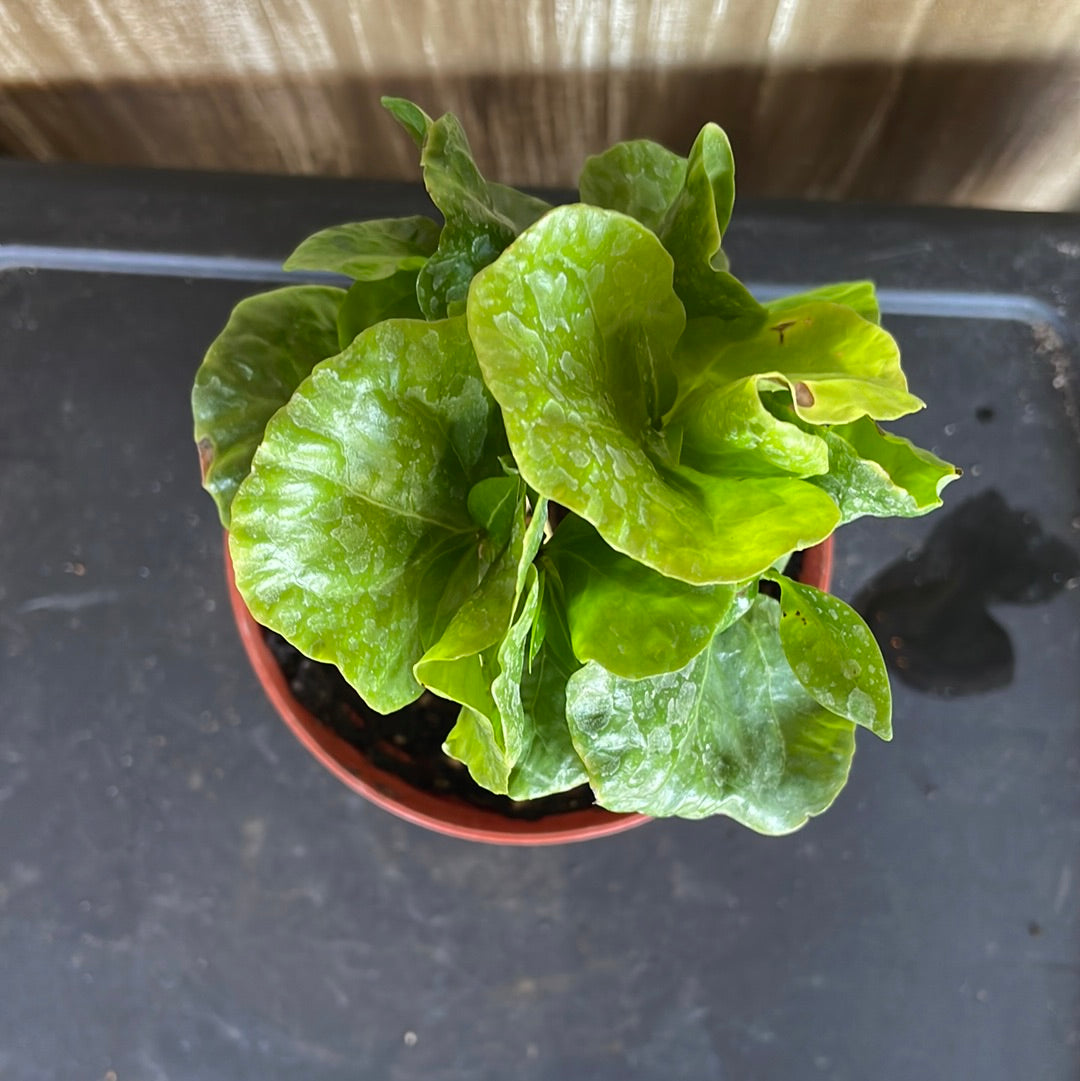Lovehopegrow
Coffea Arabica
Couldn't load pickup availability
**Coffee Arabica**
**Plant Care Guide and Description**
**Description:**
Coffee Arabica, commonly known as Arabica coffee, is one of the most popular and widely consumed coffee species globally. Originating from the highlands of Ethiopia, Arabica coffee is cherished for its smooth and nuanced flavors, making it a favorite among coffee connoisseurs. The Arabica plant is an evergreen shrub or small tree with glossy, dark green leaves and a graceful growth habit. It produces fragrant, white flowers that resemble jasmine blossoms, followed by cherry-like fruits containing the coffee beans.
**Plant Care Guide:**
**1. Light:**
Arabica coffee plants thrive in bright, indirect sunlight. Avoid exposing them to direct, intense sunlight, as it can scorch the leaves. Place your plant near a window with filtered light, or provide shade during the hottest parts of the day.
**2. Temperature:**
Maintain a moderate temperature range of 60-70°F (15-24°C) for your Arabica coffee plant. Protect it from sudden temperature drops and drafts, which can stress the plant.
**3. Humidity:**
Arabica coffee plants prefer high humidity levels. If your indoor environment is dry, consider using a humidity tray, misting the plant's leaves, or placing a humidifier nearby.
**4. Watering:**
Keep the soil consistently moist but not soggy. Water your Arabica coffee plant when the top inch of soil feels slightly dry to the touch. Use room-temperature, non-chlorinated water to avoid shocking the plant's roots.
**5. Soil:**
Plant your Arabica coffee in well-draining, slightly acidic soil. A mix of peat moss, perlite, and a small amount of sand can create an ideal medium for growth. Avoid waterlogged soil to prevent root rot.
**6. Fertilization:**
Fertilize your Arabica coffee plant with a balanced, water-soluble fertilizer during the growing season (spring and summer) every 4-6 weeks. Reduce or stop fertilization in the dormant months (fall and winter).
**7. Pruning:**
Regularly prune your Arabica coffee plant to maintain its shape and encourage new growth. Remove dead or yellowing leaves and any weak, leggy stems.
**8. Pests and Diseases:**
Keep an eye out for common pests like spider mites and aphids. Regularly inspect the plant's leaves for signs of infestation, and if necessary, treat with insecticidal soap. Ensure proper air circulation to prevent fungal diseases.
**9. Repotting:**
Repot your Arabica coffee plant every 2-3 years, preferably in the spring. Choose a slightly larger pot and fresh potting mix to provide room for root growth.
**10. Pollination and Fruit Development:**
Indoor Arabica plants may produce flowers, but they often require specific conditions for successful pollination and fruit development. Hand-pollination by gently transferring pollen between flowers can increase the chances of fruit formation.
**In Conclusion:**
Caring for a Coffee Arabica plant can be a rewarding experience for both coffee enthusiasts and indoor gardeners. With proper attention to light, temperature, humidity, and watering, you can enjoy the beauty of its foliage and the potential to see your own coffee cherries develop over time. Remember that Arabica coffee plants are sensitive, so watch for signs of stress and adjust their care accordingly.
